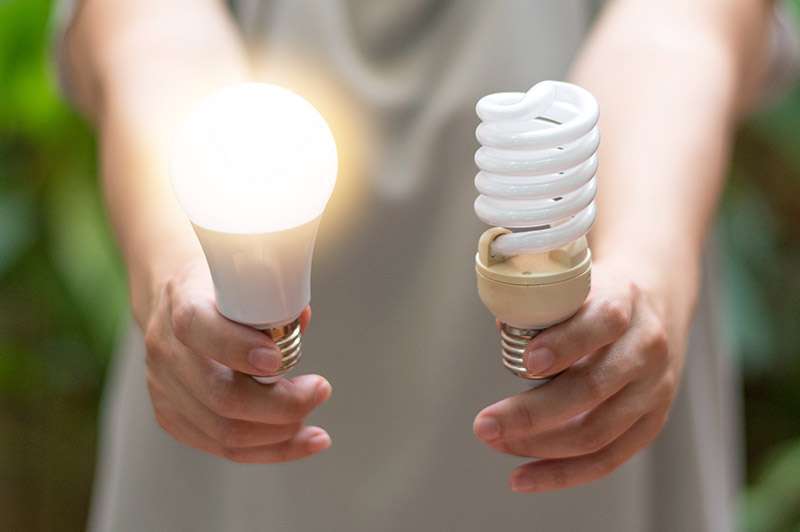


Choosing the right light bulb is about more than just brightness. It’s about energy efficiency, cost savings, and environmental impact.
When it comes to lighting, the debate often comes down to LED vs CFL bulbs.
Let’s dive into the differences to help you make the right choice for your needs.
LED (Light Emitting Diode) bulbs are known for their energy efficiency and long lifespan.
LED technology uses semiconductors to produce light, making them highly durable and cost-effective over time.
LED bulbs use electricity to pass through a semiconductor, producing light without filaments or gas. This makes them more efficient, offering more light with less energy.
As a result, LEDs save you more on your electricity bills, especially when comparing LED wattage vs CFL.
CFL (Compact Fluorescent Lamp) bulbs are another energy-efficient option.
They work by using electricity to excite gas inside the bulb, which produces UV light. The UV light is then converted into visible light through a phosphor coating.
A CFL bulb creates light by passing electricity through gas inside the tube.
While more efficient than traditional bulbs, CFLsl consume more power than LEDs to achieve the same brightness.
When comparing CFL vs LED power consumption, LEDs have a clear advantage. They require fewer watts to produce the same brightness as CFLs, resulting in lower electricity bills over time.
So, which is more energy-efficient: LED or CFL? For long-term use, LEDs!
LEDs last longer than CFLs. An LED can last up to 25,000 hours, while a CFL typically lasts around 8,000 hours.
LEDs are the more eco-friendly option because they don’t contain harmful materials like mercury, which is found in CFLs.
Once you’ve decided on LEDs, selecting the right one is key. Eveready offers a variety of LED options:
In the LED vs CFL debate, LEDs are more energy-efficient, longer-lasting, and better for the environment. CFLs are more affordable upfront and ideal for anyone looking for an economical lighting option.